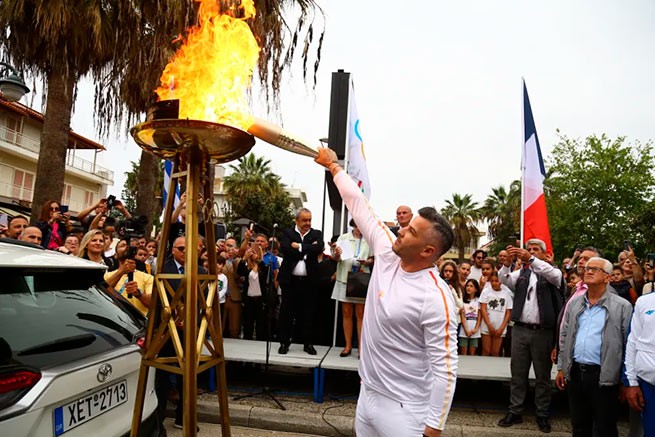The Minoan civilization in Crete, Greek culture in mainland Greece, and Cycladic culture in the Aegean, despite differences in funerary customs, architecture and art, had genetic similarities during the Early Bronze Age about 5,000 years ago.
This is the discovery of a new international scientific study of the analysis of the region’s ancient DNA, carried out by Greek and foreign researchers, which sheds more light on the origin of the first known Bronze Age cultures in Europe, the role of migration and the emergence of Indo-Europeans and the formation of European languages.
This is the first study that “reads” (sequencing) complete genomes from skeletons found at various archaeological sites in the Aegean region and the wider area of Greece, namely four from the Early Bronze Age and two from the Middle Bronze Age.
The mitochondrial genomes of 11 other early Bronze Age humans were also analyzed. The analysis of all these genomes allowed scientists to carry out demographic and statistical analyzes and draw conclusions about the history of the ancient populations of the area. Reading ancient DNA is a very difficult task due to the decomposition of such old biological material.
Researchers led by Professor Christina Papageorgopoulou from the Laboratory of Natural Anthropology of the Faculty of History and Ethnology of the University of Democritus in Thrace and Anna-Sappho Malaspina from the Faculty of Computational Biology of the University of Lausanne and Lausanne Cell Biologists came to the conclusion that the first civilizations that built monumental palaces and city centers in Europe were genetically more homogeneous than expected.
The findings, according to the researchers, are important because they suggest that important innovations such as urban development, the use of metals and intensive trade that occurred during the transition from the Neolithic to the Bronze Age were not only the result of mass migration from the East to the coast The Aegean Sea, as previously believed until now, but also in the cultural continuity of the local agricultural Neolithic populations of the Aegean Sea. The populations of the Aegean Sea of the Early Bronze Age, judging by the paleogenetic data, were formed to a relatively small extent as a result of migrations from the East.
On the other hand, the study found that by the Middle Bronze Age 4000–4600 years ago, people from the North Aegean had significant genetic differences compared to people from the Early Bronze Age. These people had approximately half (50%) common descent with people from the Ponto-Caspian steppe, a large geographic area that stretched between the Danube and Ural rivers and north of the Black Sea.
In addition, according to genetic data, today’s Greeks are genetically very similar to the population of the Northern Aegean, who lived in 2000 BC.
The study estimates that migratory waves from the great steppe north of the Aegean have shaped today’s Greece. All these possible migration waves, according to researchers, preceded the emergence of the earliest form of the Greek language, thus supporting theories about the origin of the early Greek language and the evolution of Indo-European languages either in Anatolia or in the steppes east of the Caspian Sea.
Many other Greek researchers from the Ancient Ephorata of Kozani and Florina, as well as from the universities of Democritus, Aristotle and the Aegean, took part in the new study.
Source: ΑΠΕ – ΜΠΕ






More Stories
Olympic torch relay: traffic restrictions in Athens and Attica on Friday
Ancient papyrus reveals Plato's burial site
Metropolitan Chrysostom: "The Church will never recognize same-sex marriage – the issue is not closed"